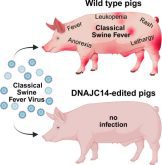The current leading cause of death in Canada, as per Statistics Canada, is cancer. It’s closely followed by heart disease. In the U.S., the causes are reversed.
In the U.S. at the turn of the century, it was tuberculosis, as per the American Lung Association.
Tuberculosis and its cousin bovine tuberculosis (which also infects humans) are lung-attacking, potentially deadly diseases that humankind has been wrestling with for millennia.
Read Also

Beekeepers want financial protection against tropi mite
Tropilaelaps (tropi) mites haven’t landed in Canada yet; beekeepers want to know they’ll get federal financial help if the deadly bee parasite ever does
Analysis of Egyptian mummies from 2400 BCE have shown skeletal deformities typical of the disease, according to a 2017 article in the Journal of Preventive Medicine and Hygiene.
History and classic literature is rife with references to TB’s archaic name, consumption. A quick internet search of “famous people who died of tuberculosis,” will unearth a list of kings, actors, actresses, writers, poets and many others. Fantine dies of it in Les Misérables. In Anne of the Island, the titular character’s friend is dying from “galloping consumption.”
TB “has always been a permanent challenge over the course of human history,” the same 2017 article said.
By the end of the 19th century, an estimated 70 to 90 per cent of the urban populations of Europe and North America were infected with the tuberculosis bacillus, according to one Harvard article. Not everyone who encountered the bacteria would get sick but of those that did, about 80 per cent died.
Stop spitting on the sidewalk
Tuberculosis was previously thought to be hereditary, the Harvard article said. In 1882, researcher Robert Koch identified the bacteria tuberculosis bacillus, which helped convince the medical community it was contagious.
“Preventing the spread of tuberculosis became the motivation for some of the first large-scale public health campaigns,” the article said.
TB can be transmitted from human to human, such as through saliva. The American Lung Association, which formed in 1904 to combat TB, wrote that one of its most successful prevention campaigns involved getting people to stop spitting on sidewalks. Good personal hygiene was also promoted.
Isolation of sick people in “sanitoriums” also became widespread.
One such institution was established in Ninette. Today it’s considered a historic site but in 1929, the staff there were in charge of Manitoba’s campaign to eradicate TB, according to an article from the Manitoba Historical Society.
During the 1940s and 1950s, treatment of TB with drugs made great strides and by the 1960s, pharmacological and surgical treatment had become the rule, the same article said. The sanitorium closed in 1972.
That’s recent enough that one of the Beatles, Ringo Starr, contracted TB as a teenager and spent two years recovering in a sanitorium, a San Diego Union Tribune article said.
No more raw milk
People were also getting TB from cattle, whether through direct contact or from eating and handling raw meat and milk. It became one of the reasons behind milk pasteurization.
“Typhoid and scarlet fever, diphtheria, tuberculosis and various diarrheal diseases were all capable of being transmitted through the consumption of milk,” said an article from McGill University’s Office for Science and Society.
The article said that one in every four infants in New York City died in 1891, many from drinking tainted milk. That dropped to about one in 14 when pasteurization was introduced.
Again, Robert Koch had a hand in eradication. He invented tuberculin, a serum derived from cultures of tuberculosis bacillus. When injected under the skin of a person or animal, swelling occurs if the patient has been exposed to TB.
When Canada first adopted bovine TB control measures in 1896, it was through free testing of herds with tuberculin, wrote Orlan Hall in the 1939 article “Progress of Tuberculosis Eradication in Canada.”
TB today is rare in Canada, although the Canadian government notes that a disproportionate number of the country’s 1,829 active TB cases in 2021 occurred in populations struggling with poverty and other socio-economic challenges.
On the bovine side, Canada is considered free of bovine TB, but cases still emerge, such as at least 32 confirmed cases this year related to a Saskatchewan herd.
Globally, 2022 saw 10.6 million human cases, including 1.3 million deaths.
















